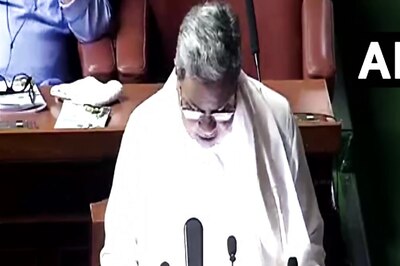
views
Have women emerged as an important social constituency? Is their vote finally beginning to count?
If the recent declarations by political parties are any indication, the answer to these questions is a firm yes. As the next Lok Sabha election nears, politicians of all hues are going all out to woo women voters by offering them greater representation in party structures and legislatures.
Keeping a firm eye on next month’s general election, Odisha Chief Minister Naveen Patnaik has said that the Biju Janata Dal (BJD) will field women in one-third of the 21 Lok Sabha seats from the state. West Bengal CM and Trinamool Congress chief Mamata Banerjee topped this by allocating 17 of the 42 Lok Sabha seats in the state to women candidates.
Congress president Rahul Gandhi has promised 33% reservation for women in government jobs and legislatures while stating, “Women are much smarter than men.”
Congress general secretary Priyanka Gandhi Vadra flagged women’s security as a key election issue while addressing a public rally in Ahmedabad, where she changed the order of her opening line to “behenon aur bhaiyyon (sisters and brothers)” instead of the other way round.
The ruling BJP takes pride in the fact that it has seven women ministers in the government and that it is committed to giving 33 percent representation to women in party structures. The Congress has also made a similar promise. Prime Minister Narendra Modi has personally appealed to women voters through schemes like the Ujjwala programme (distribution of free cooking gas), the Jandhan scheme and Swachh Bharat campaign. This outreach has paid him rich political dividend as women voters are known to have a special affection for Modi.
It is clear that there is a mad scramble among politicians to grab a slice of the women’s vote though their record in giving greater representation to women has, so far, been patchy. None of the political parties has come good on their promise, but the manner in which they are competing with each other now to win over women voters suggests a clear shift from the past.
As Ranjana Kumari of the Centre for Social Research says, this is because women have become “more aspirational and independent” and are coming out in larger numbers to vote.
Not only has the turnout of women voters registered a steady increase over the years, but their voting preferences are also no longer being decided by the males in the house. With greater access to multiple sources of information and also empowered by the reservation of 33 percent seats in Panchayati Raj institutions, women have become more aware, coming into their own as voters. Consequently, political parties are being forced to take note of the woman voter, not because they are genuinely committed to women’s empowerment, but primarily because women can help them win an election.
Despite these encouraging gestures by political parties, India has a long way to go before it can boast of a critical mass of women in decision-making positions because there are no guarantees that their promises will actually be implemented. So far, women’s representation in Parliament has hovered around a mere 12 percent with political parties insisting that they were unable to field more women as they did not have a sufficient number of “winnable” female candidates.
The situation in state assemblies is far worse. This is essentially a result of the deeply entrenched patriarchal mindset which has also ensured that the Women’s Reservation Bill, providing for a 33% quota for women in Parliament and Assemblies, has languished for over a decade.
However, the mere allocation of tickets to women is not sufficient. Political parties have to go a step further in picking the right candidates, ensuring their victory and also guiding them so that their presence is not reduced to mere tokenism. For instance, the provision of quotas for women in local bodies has pushed many rural women into leadership positions providing political parties a ready talent pool of female leaders who can be mentored to take on a bigger role at the state or national level. But unfortunately, that has not happened.
In fact, there is also all-round scepticism that the entry of women in legislatures will automatically improve the lot of women or result in a greater focus on their problems. Like their male colleagues, women are also bound by their respective party whips and are prodded by political compulsions. Which probably explains why women politicians chose to remain silent during the recent raging #MeToo controversy and why issues like sexual harassment, women’s health and education, equal wages for women or women’s security do not figure high on their list of priorities. Or none of them could exert sufficient pressure on their parties to pass the pending Women’s Reservation Bill.
(The author is a senior journalist. Views are personal)




















Comments
0 comment